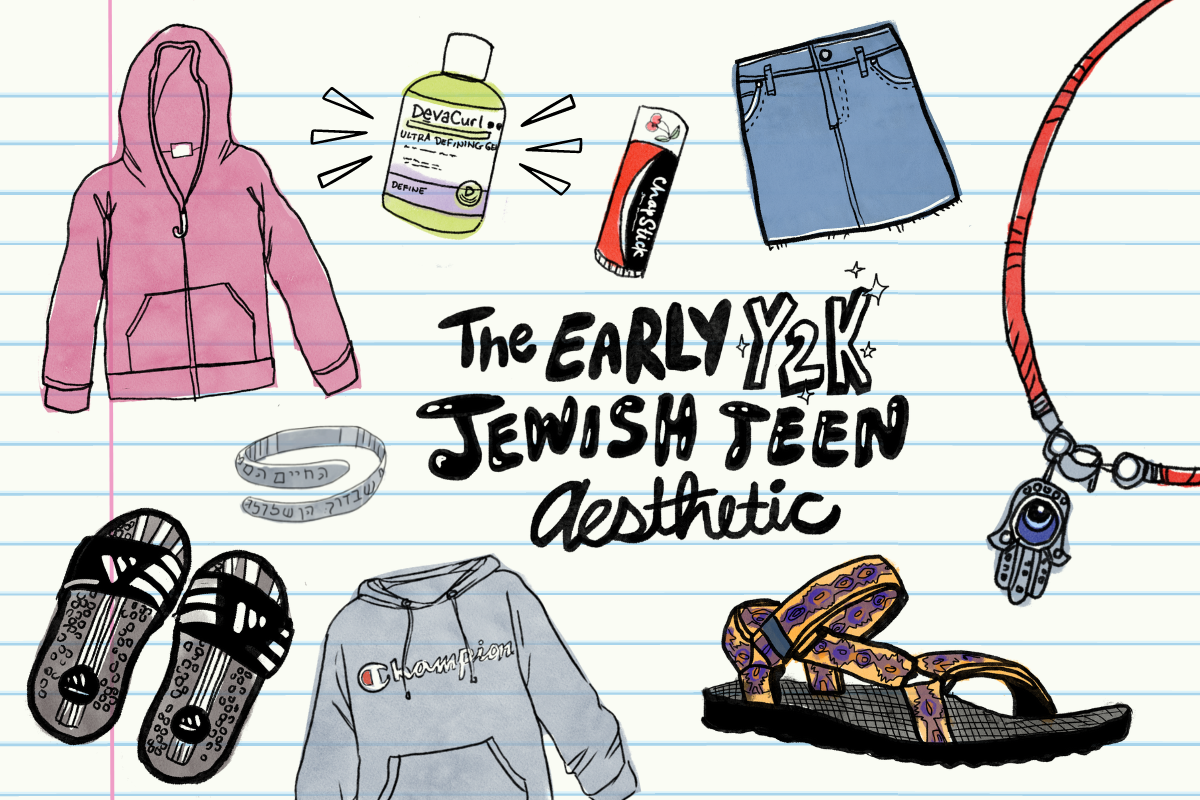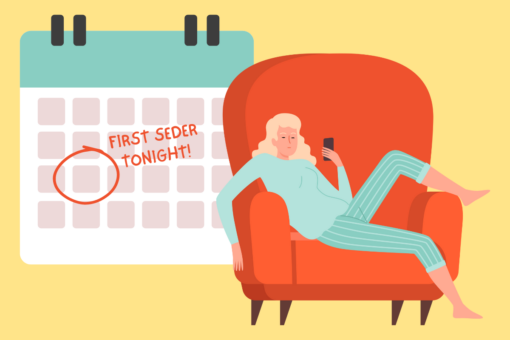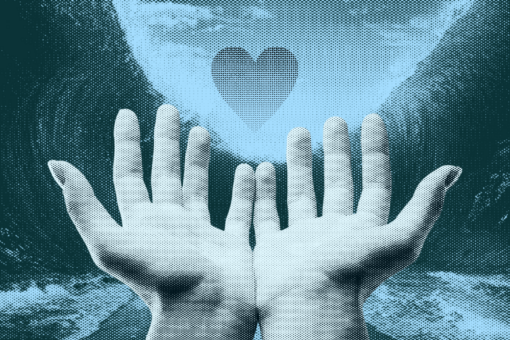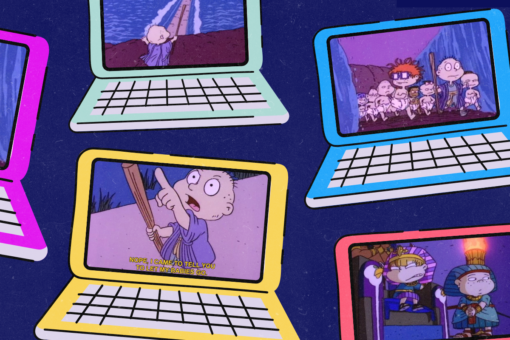We know there’s no such thing as “looking Jewish” — we come in all shapes, sizes, colors and beliefs. But, there is definitely a “look,” which most of my Jewish girlfriends and I seemed to rock in the early 2000s and which, at 31, I still haven’t completely outgrown.
It was a look that could help you spot another Jewish girl in the halls of public school the first weeks of September when you were so far from the bunks at summer camp, the tour bus in Israel and Saturday afternoons after shul with friends that you wondered if it ever happened. A look that any Jewish-American girl of my era would recognize in their Facebook photo albums from 15 years ago. A look that sent those subtle messages across the hallways or on the streets, where two women unknown to one another could lock eyes and give that nod of recognition: I see your red string bracelet, your Naot, your USY hoodie. We’re here, we’re Jewish, we’re standing strong.
It is a look that formed my Jewish identity, and still does, and one which I’m not ready to let go.
So what are the defining features of this look? Let’s do a refresh:
Hair
Depending on the texture, a messy bun with a bandana tied up as a headband, or wet, scrunched hair (on Shabbos) with a hair clip or pin-straightened hair worn down (that would frizz in the summer humidity the moment you stepped outside). Braids, braids, braids. A baseball cap on those super hot days. And let’s not forget the moment that your BFF finally learned about DevaCurl.
Jewelry
Loud Michal Negrin studs, or maybe a pair of nice hoops gifted on Hanukah (hey Gretchen Wieners). Generally more than one set of ear piercings, unless your parents didn’t let you have piercings at all. Long, chunky necklaces (wrapped twice around) when getting dressed-up, or a Hadaya necklace with your favorite quote. A blue opal hamsa, Hebrew chai pendant, or star-of-David (the daintier, the better). Wrists wrapped in friendship bracelets, a red string from the Kotel, a Michael Levin bracelet, and everything beaded. Hadaya rings, or maybe a funky silver one from your time in Albuquerque on a cross country trip, or the shuk in Tel Aviv.
Clothes
If you weren’t borrowing a friend’s blouse for the post-Havdalah dance, then you were usually sporting a T-shirt from your summer in Eastern Europe (“Czech Me Out!”) or Israel (“Archeological Seminars, We Dig Israel”, Kibbutz Keturah, and Maccabi Tel-Aviv all strong options).
You also likely had a T-shirt from your parents’ alma mater (one with the name of the university written in Hebrew), or a touristy site you visited (and your friends probably had matching ones, too). Throw in a tie-dyed shirt, and a pack of Hanes white T-shirts. If any of these shirts were crew neck, it usually would be cut into a “V” in the middle, with cuffed sleeves.
Over this there was always a soft North Face jacket (those would last for YEARS) with plenty of zippers for your favorite lip balm, gum, or anything else you may need. A hoodie from your favorite summer at camp (and where your bunk likely argued over whether or not to order zip ups or pullovers), as well as a Champion hoodie borrowed from your crush. Feeling fancy? A Juicy or Butter sweatshirt. And a shrug or cardigan for services, always.
The bottoms were 100% always Soffe shorts in every single color, rolled up as many times as you could get away with. On summer cold mornings we’d wear them under a pair of sweatpants which had a quote on the back (probably, again, an inside joke) and when it got hot we’d take them off to reveal the Soffes.
You also needed HardTails, though a black pair of leggings from Target would do the trick just fine, especially if they also folded over on the top.
And, without a doubt, a cute denim skirt for the week, as well as a black, versatile long one (no more than three inches above the knees!) for Shabbat. Got tired of the skirt? Trade with your friends the following week.
Feet
Birkenstocks. Naot. Tevas. Adidas gel slides (with socks, obviously).
Though forged especially as a summer camp aesthetic, these social signifiers and style goals guided us through the year. Maybe you’ve changed your stance on Zionism since adolescence, or you don’t quite fit into those Soffes anymore. Maybe the chain from your favorite necklace snapped too many times, and you can’t quite remember the chevron stitch for those friendship bracelets. But if you look a little more closely, there are probably some remnants of your Jewish teen self that you carry with you — maybe it’s because it’s what’s familiar, maybe it’s just a little way to stay connected to your people or maybe it’s a way to spot another Jewish gal around the shtetl.
I know I can’t be the only one who still has Birkenstocks as my go-to shoes, an assortment of Jewish-themed necklaces, and a drawer filled with my favorite t-shirts and hoodies from way back when. I can’t be the only one who will still order Hadaya every time I’m in the Old City.
In a world that’s not always kind to Jews, where maybe you’re not so comfortable drawing attention to your Judaism, sporting this look is just a small, subtle way to celebrate and connect to your Jewish-American identity no matter how old you get. It’s a look that, today, I can still pick up anywhere. There is the glance, smile, and nod from another woman in my neighborhood when I notice them noticing my Tevas, or they notice me noticing the Chai around their neck, an unspoken understanding that we’ve both been there. We get it. We’re here now, and we’re not going anywhere.



